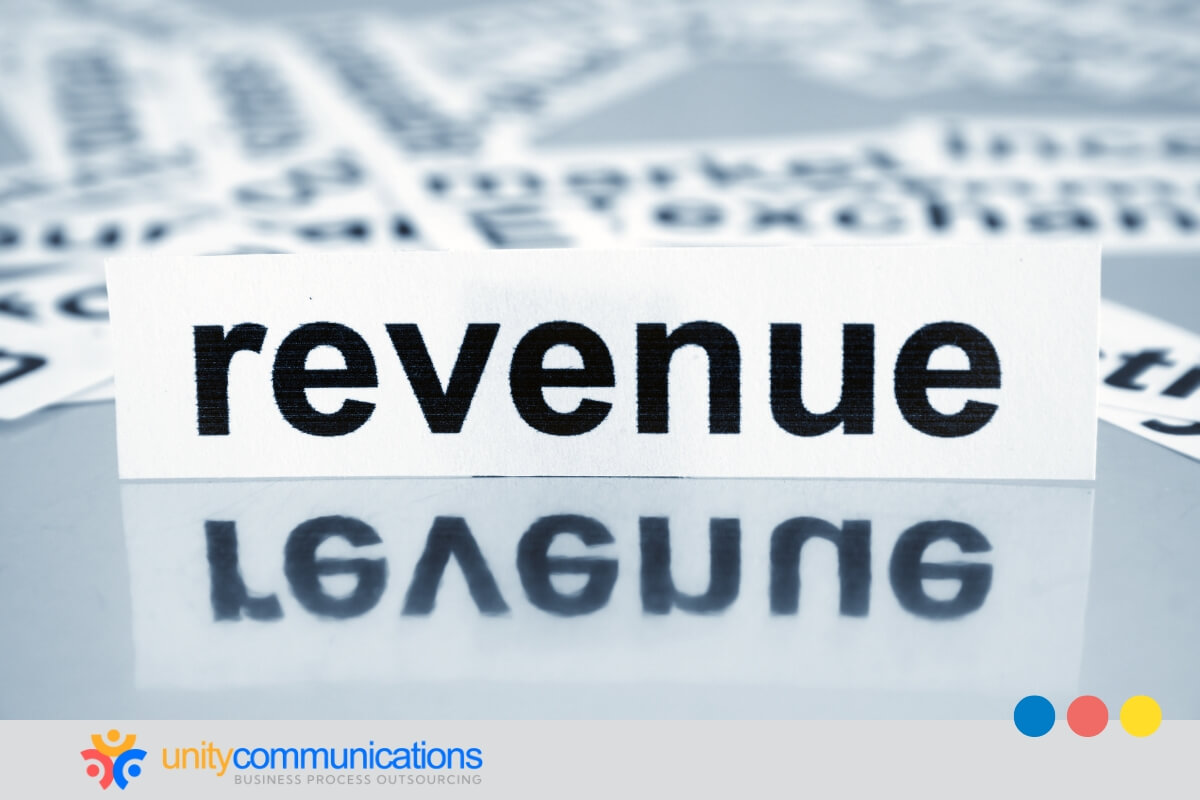Table of Contents
Knowledge process outsourcing (KPO) can be a game-changer for companies aiming to scale intelligently and stay competitive. But how do you know if they are delivering results?
Measuring performance in KPO setups is critical to ensuring that your investment drives real value and that outcomes align with business goals.
Whether you’re scaling data analytics or market research, this article is for you. It outlines the factors for assessing the effectiveness of this business process outsourcing (BPO) model. Continue reading to learn more!
KPO vs BPO metrics: What’s the difference?

According to Research and Markets, the global KPO market could hit $374.3 billion by 2030 at a compound annual growth rate (CAGR) of 17.5%. This is due to the increasing demand for specialized expertise. As the industry evolves, you must determine whether KPO delivers value.
However, measuring performance in KPO setups differs from BPO for the following reasons:
- BPO involves delegating standardized, repetitive tasks such as customer service, payroll, or data entry to third-party firms. Companies outsource these functions of BPO to reduce operating costs, enhance efficiency, and scale operations quickly.
- KPO providers deliver more advanced and specialized services using deep domain expertise, strategic insights, and analytical capabilities. This makes its key performance indicators (KPIs) challenging to track.
The best approach is to focus on the most critical factors to measure your KPO provider’s impact.
Measure performance in KPO setups with these 6 factors
Measuring KPO performance requires assessing how well your provider supports strategic goals. Here are six key factors to evaluate the partnership’s value:
1. Accuracy and quality of deliverables
Accuracy and quality are non-negotiable in any KPO engagement. They directly influence business decisions and desired outcomes. While volume can be easy to track, evaluating the depth and correctness of work requires a more nuanced approach.
Here are effective strategies for measuring KPO accuracy and quality of deliverables:
- Peer reviews and audits. Implement regular quality checks, with senior team members evaluating deliverables against established standards.
- Client feedback loops. Gather structured feedback from end users on the work’s clarity, relevance, and usefulness.
- Error rate tracking. To identify recurring issues, maintain logs of revisions and errors flagged by clients or internal teams.
- Checklist-based QA. Customize quality assurance checklists to match every deliverable with your criteria.
Focusing on accuracy ensures every insight drives smarter decisions and better outcomes.
2. Turnaround time (TAT) and deadline adherence
Grammarly’s 2024 report found that knowledge workers spend 88% of their workweek communicating on various channels. This increases their workload, worsens stress, and delays projects.
Monitor turnaround times and adherence to deadlines using these strategies:
- Define turnaround expectations in service-level agreements (SLAs) for accountability and alignment.
- Leverage project management tools to track real-time progress, deadlines, and team workloads.
- Monitor response times for individual tasks to identify patterns or bottlenecks that affect delivery.
- For missed deadlines, perform structured reviews to understand delays and prevent repeat issues.
- Include realistic buffers in project schedules to account for reviews, rework, or unexpected problems.
In high-stakes, knowledge-driven work, speed and responsiveness matter as much as quality. Tracking turnaround times and enforcing delivery standards fosters accountability and continuous improvement.
3. Client satisfaction
Another metric to measure performance in KPO setups is client satisfaction. It shows how well the provider meets expectations, including deliverables, communication, and strategic alignment.
High client satisfaction often signals strong trust, long-term value, and a partnership that supports evolving business needs.
Analyze client satisfaction through:
- Regular satisfaction surveys. Conduct quarterly or project-end surveys to gauge overall satisfaction, communication quality, and perceived value.
- Feedback calls and check-ins. Schedule recurring calls to discuss team performance.
- Net promoter score (NPS). Use NPS to measure how likely clients will recommend your services.
- Post-project reviews. Hold debrief sessions to discuss outcomes and gather actionable feedback.
Understanding how your clients perceive your work is essential to sustaining a high-level KPO relationship. A structured feedback loop can reveal how clients feel about your work and opportunities for continuous improvement.
4. Analyst utilization rate and productivity
Analysts are the backbone of many KPO teams. They deliver insights and recommendations that drive business decisions. Measuring performance ensures efficient resource use, balanced workloads, and consistent output.
Here are key strategies to track and optimize the metric:
- Track billable vs. non-billable hours. Track the time analysts spend on client-facing, internal, and idle tasks to measure utilization.
- Set output benchmark. Define expected deliverables per analyst based on task type, complexity, and role.
- Monitor time logs. Use time-tracking tools to uncover daily work patterns and identify inefficiencies or overloading.
- Conduct capacity planning. Regularly assess workload distribution to avoid overwhelming or underutilizing analysts.
- Review performance trends. Evaluate long-term trends in output and quality to identify training needs or process improvements.
Tracking and improving analyst utilization and productivity helps maintain high-quality output without burnout.
5. Domain knowledge and innovation
Another factor to consider when measuring performance in KPO setups is deep domain and innovation expertise. This quality reflects how well a KPO team can think critically, add valuable insights, and proactively improve outcomes.
The following can help you measure and encourage domain knowledge and innovation:
- Expertise assessments. Conduct periodic evaluations through quizzes, certifications, or peer reviews to validate technical and domain proficiency.
- Client recognition and feedback. Track when clients acknowledge the team’s understanding of the subject matter or thought leadership in feedback sessions.
- Innovation logs. Maintain a record of new ideas, tools, or approaches proposed by the team, including whether and how they were implemented.
- Innovation KPIs. Set specific goals for process improvements, automation, or solution enhancements and measure adoption and impact.
Measuring this capability empowers your KPO team to move from task execution to strategic contribution.
6. Benchmarking against industry or internal standards
Benchmarking is essential for understanding how your KPO team fares against competitors and the internal team. It provides context for KPIs, helps identify gaps, and supports continuous improvement.
Below are ideas for measuring performance in KPO setups through benchmarking:
- Industry reports and surveys. To gauge competitiveness, compare metrics such as TAT, accuracy, and CSAT against published industry benchmarks.
- Internal historical comparison. Track year-over-year performance within your organization to assess progress and identify growth areas.
- Competitor analysis. Where possible, gather insights on competitor performance through public case studies, client reviews, or vendor scorecards.
- Standardized scoring models. Apply consistent scoring frameworks across projects or teams to evaluate performance objectively.
- Third-party audits or certifications. Engage external reviewers to assess quality and compliance with industry best practices or standards.
Consistent benchmarking leads to smarter decisions, better strategies, and continuous excellence.
Linking KPO output to business outcomes or returns

Connecting KPO output to tangible business outcomes is crucial for measuring performance in KPO setups. It shows how knowledge work supports strategic goals and boosts returns.
Consider these strategies for linking KPO output to business outcomes:
- Track impact on revenue. To assess financial impact, measure how KPO deliverables contribute directly to sales, lead generation, or customer retention.
- Define clear business metrics. Align KPO activities with market share growth, cost reduction, or operational efficiency.
- Customer success metrics. Evaluate how KPO outputs enhance customer satisfaction, loyalty, or experience. Tie those improvements to long-term profitability.
- Monitor productivity gains. Consider process improvements, time savings, or automation introduced by the KPO team.
- Perform a cost-benefit analysis. Compare outsourcing expenses against the returns from enhanced services and efficiency gains.
Tying knowledge work to measurable results can justify the investment and executive buy-in.
The role of real-time dashboards and reporting tools
About 58% of businesses still rely on spreadsheets to monitor employee performance. This tool is inadequate in KPO arrangements where speed and precision matter. The ideal solutions are real-time dashboards and reporting tools.
These include the following:
- KPI dashboards visualize key performance indicators to track team performance at a glance.
- Project management tools monitor progress, deadlines, and workloads in real time. They help allocate resources efficiently.
- Time-tracking applications measure the external team’s productivity and resource utilization.
- Business intelligence tools create custom reports and visuals based on data. They simplify analysis and forecasting.
- Customer feedback platforms collect real-time client feedback to monitor satisfaction and quickly address concerns.
- Error/defect tracking systems monitor quality control metrics. They log errors or defects in deliverables for quick resolution and continuous improvement.
Real-time dashboards and reporting tools are vital to measuring performance and making data-driven decisions.
How to use performance data for contract reviews and scalability planning

Performance data aligns KPO contracts with business goals, ensuring service levels meet expectations and supporting informed scaling decisions.
Here are ways to use performance data for contract reviews and scalability planning:
- Assess fulfillment. Use historical data to evaluate whether the provider consistently meets service agreements, informing contract renewals or adjustments.
- Highlight high-impact metrics. Identify which performance indicators influence business outcomes. Prioritize them in contract discussions.
- Support pricing and scope decisions. Use productivity and workload data to explain cost changes or service upgrades.
- Plan for growth or flexibility. Analyze trends to predict demand and define scalable contract models, such as flexible teams or phased onboarding.
- Incorporate performance-based incentives. Tie bonuses or penalties to specific KPIs to align provider motivation with business goals.
The bottom line
Measuring performance in KPO setups requires tracking strategic KPIs to understand their impact. Aligning outputs to business outcomes ensures that outsourcing adds value. Performance data, client feedback, and real-time dashboards can help examine quality, productivity, and scalability accurately.
Are you ready to assess your KPO team’s impact with the right metrics? Let’s connect and build a smarter strategy.




